Lizard is a reptile closely related to snakes. Like snakes, some lizards are legless. Others resemble snakes but have legs. Many large lizards look much like crocodiles. Lizards vary in size, shape, and color. They have many different ways of moving about and of defending themselves. Scientists have identified thousands of species (kinds) of lizards.
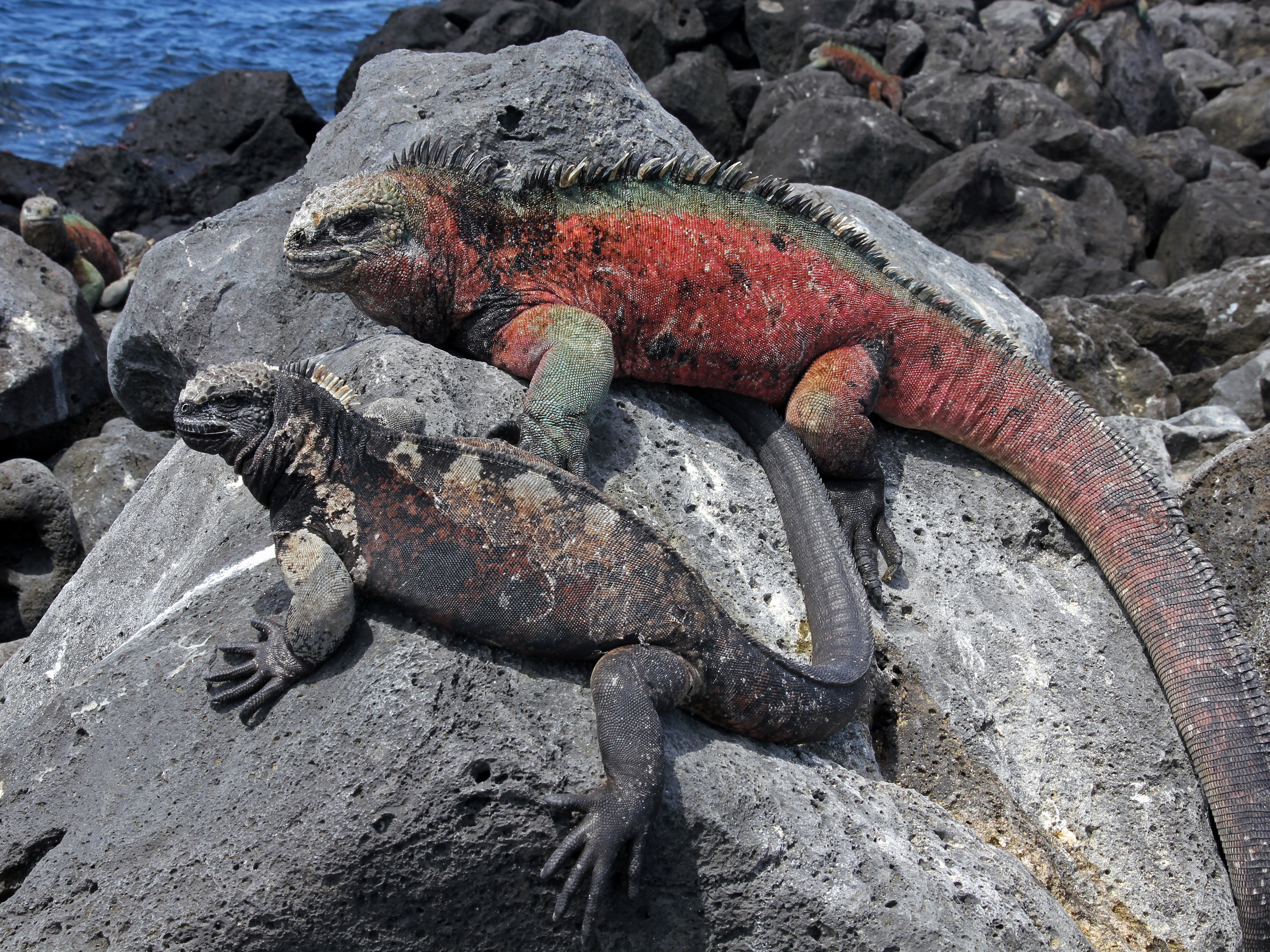
Many people mistake lizards for salamanders, which are commonly called “spring lizards.” Salamanders resemble lizards but are not related to them. Both are cold-blooded animals–that is, they cannot keep their bodies much warmer or cooler than their surroundings. But lizards have dry, scaly skin and clawed toes. Salamanders are amphibians related to frogs, and they have moist skin and no scales or claws. Lizards stay out in the sun, but salamanders usually avoid sunlight.
Where lizards live
Lizards lack the built-in body temperature control that many other animals have. So most lizards live in places where the ground never freezes. Those that live in areas with cold winters must hibernate. Lizards thrive in the tropics and other warm areas. They are the most common reptiles found in deserts. When the desert becomes too hot for comfort, lizards lie in the shade or underground to escape the sun’s rays. 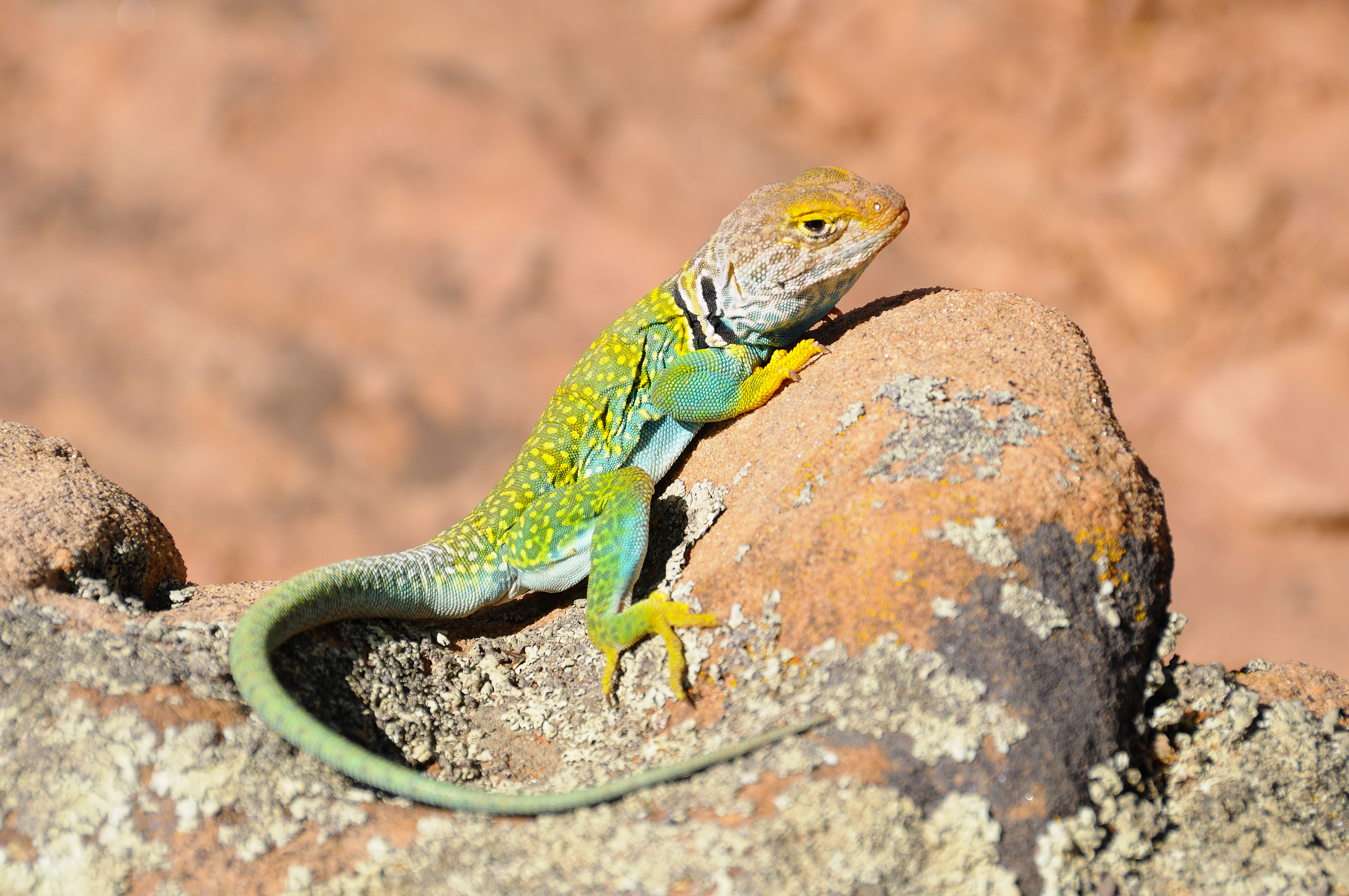
Sizes of lizards.
The smallest lizards measure only a few inches or centimeters in length. The largest lizard is the Komodo dragon. This huge Indonesian lizard can grow more than 10 feet (3 meters) long and may weigh up to 365 pounds (165 kilograms). The Komodo dragon belongs to a group of lizards known as monitors. Some other monitors grow to be 6 to 7 feet (1.8 to 2.1 meters) in length. These lizards live in Africa, Asia, and Australia.
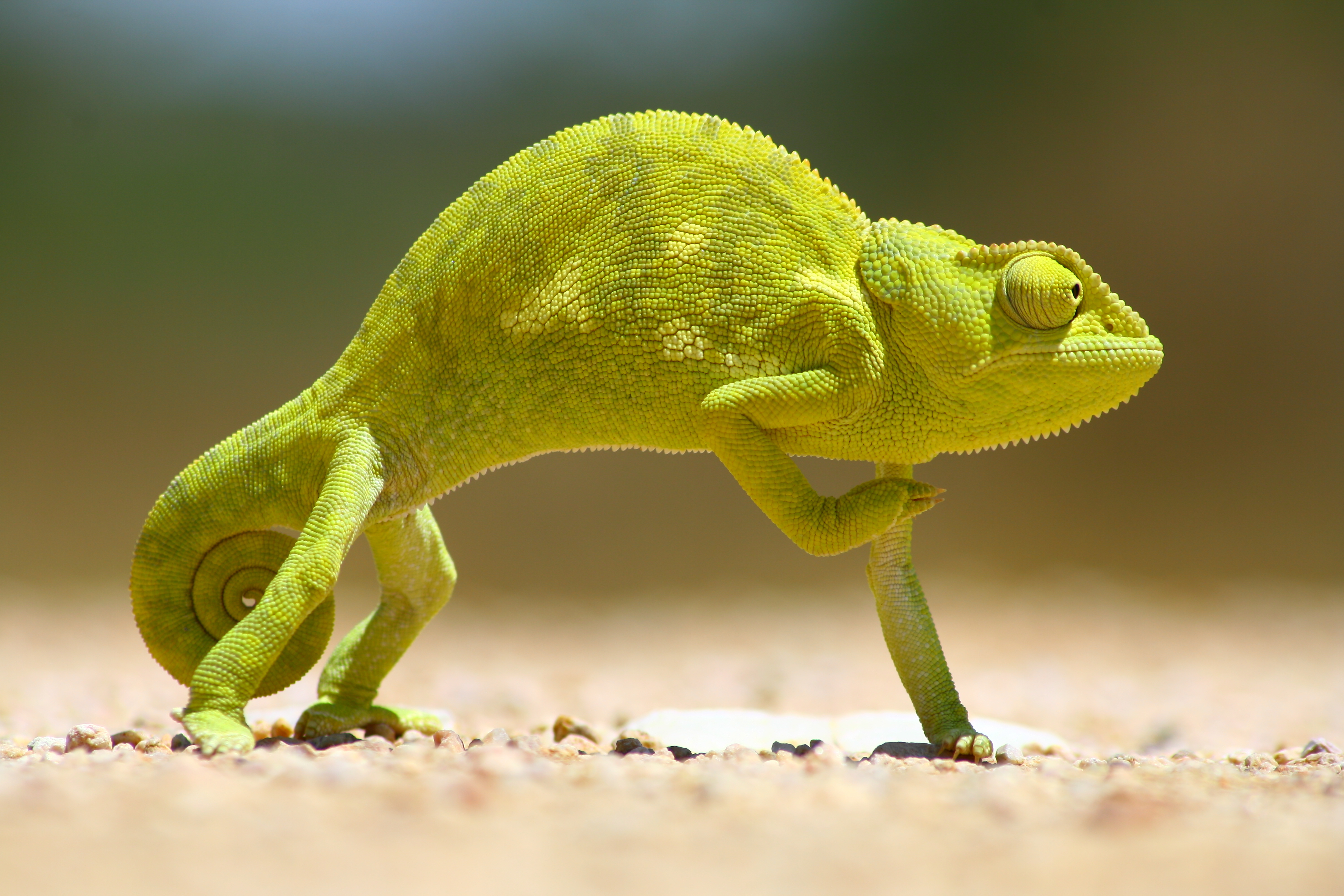
How lizards move.
Lizards move in a great variety of ways. More than 65 million years ago, huge lizards called mosasaurs swam in the sea. Even today, large monitors sometimes swim from one island to another. No present-day lizard can fly, but some kinds can glide from tree to tree like flying squirrels. Such lizards include the so-called flying dragons of Asia. Flying dragons can spread out a fold of skin along either side of their body y moving several long ribs. They glide using this extended fold of skin. A few kinds of geckos can glide using their large webbed feet and hands and their wide, flat tail.
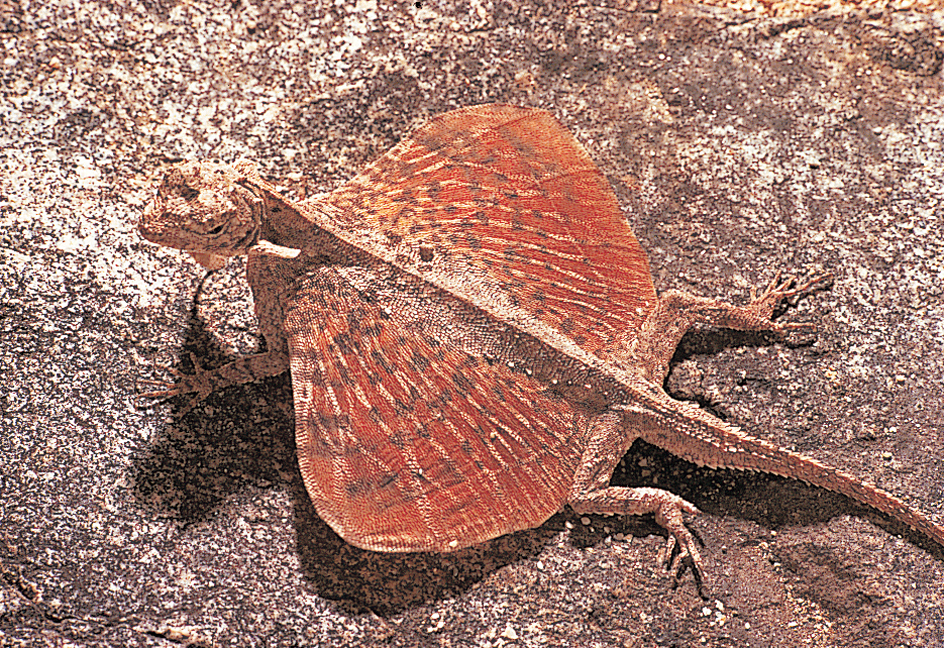
Most lizards, however, live on the ground or in trees. Even on the ground, the lizards have many different ways of moving about. Many small kinds of lizards can run quickly over logs and other objects. Geckos typically spend much of their time in trees. These lizards have claws and sticky pads on their toes. The claws grab hold of such rough surfaces as bark, and the sticky pads cling to smoother surfaces. A gecko can walk upside down across a plaster ceiling without trouble, and it can even cling to a pane of glass. Many lizards, including the Australian frilled lizard and the basilisk of tropical America, can raise the front of the body and run on their hind legs.
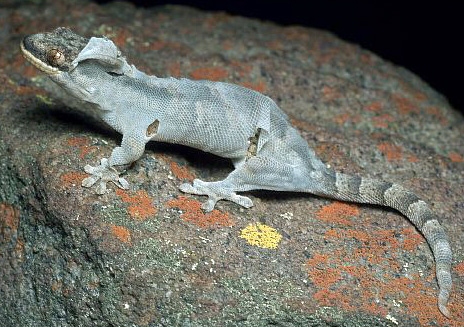
Lizards that live on the ground often can travel without any legs. Some skinks, for example, have no legs. Other skinks have weak, nearly useless legs. The glass snake of the eastern United States is really a lizard without legs. It has well-developed eyelids and ear openings, both of which are absent in snakes. These lizards typically move by using snakelike wriggling motions.

Defenses.
Lizards defend themselves in a great variety of ways. Like some snakes, many lizards bluff or play tricks. The glass snake has one of the most unusual methods of defense. This lizard’s tail grows twice as long as its body, and it has a brittle texture. If an enemy seizes this tail, the lizard simply breaks off the tail and crawls to safety. Meanwhile, the tail keeps wriggling as though it were alive, fooling the enemy that struggles with it. The glass snake then grows a new, shorter tail. Several other kinds of lizards, including skinks, can break off their tails and grow new ones to replace them.
Loading the player...Lizards fighting
Other common ways of bluffing include swelling up, hissing, and lashing the tail. The Australian frilled lizard ranks as one of the best bluffers. It rears on its hind legs, spreads an enormous frill out on each side of its neck, opens its mouth, and hisses. These antics make the frilled lizard look several times as big and fierce as it really is. A large frilled lizard measures about 3 feet (0.9 meter) long.
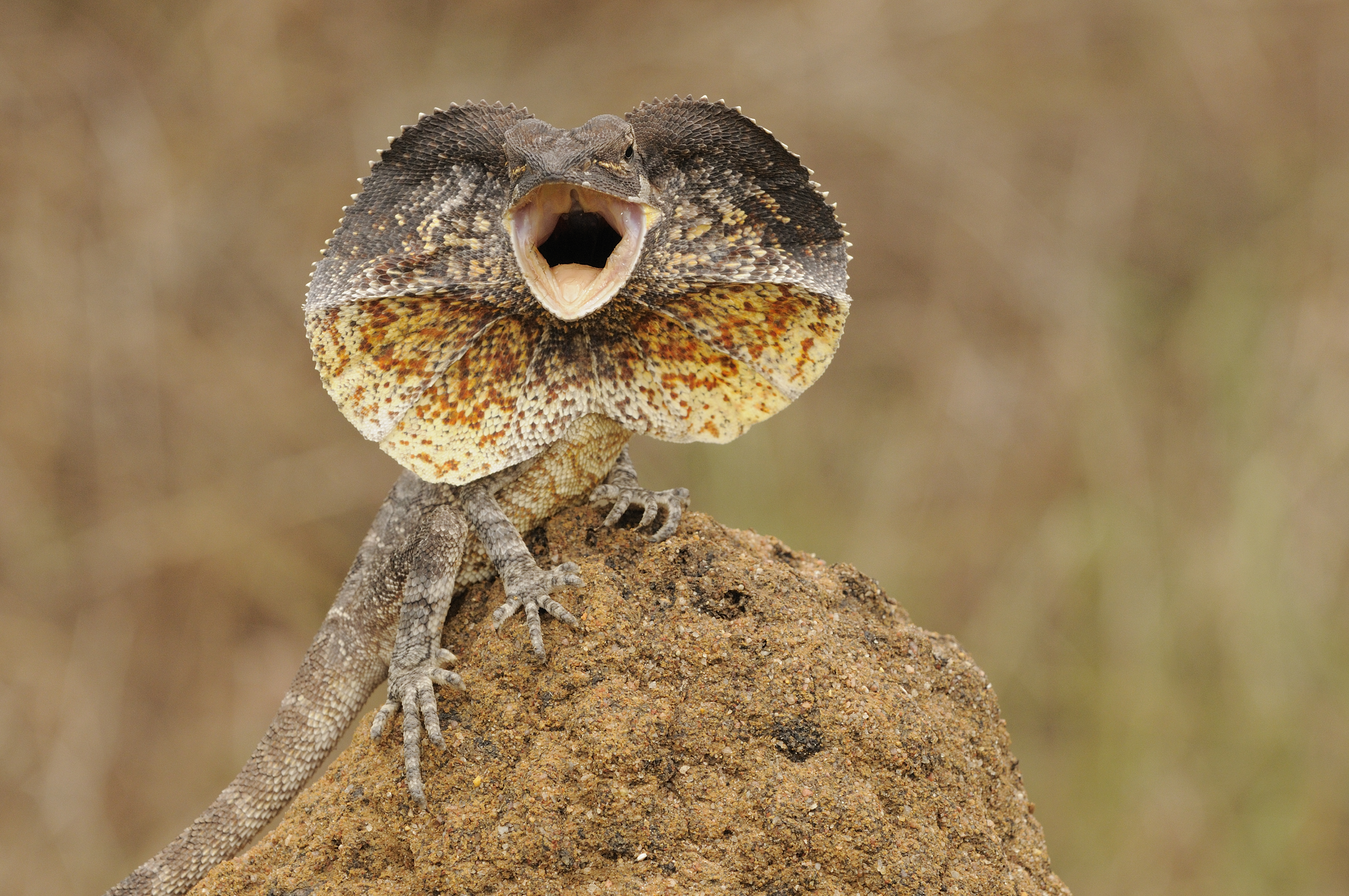
Some lizards are dangerous fighters. The monitors and their relatives use their large jaws for biting. They also use their tails as whips to strike a sharp blow. Unlike snakes, only a couple of lizards can inject venom (a kind of poison). These two lizards are the Gila monster of the southwestern United States and northern Mexico, and its close relative, the beaded lizard of Mexico.
The horned lizards have an unusual ability. They can squirt a thin stream of blood from their eyes for a distance of 3 feet (0.9 meter). They use this trick when an enemy attacks them. Sharp spines on their head and back provide added protection. Many people call these lizards horned toads because their body has a flattened, toadlike shape.
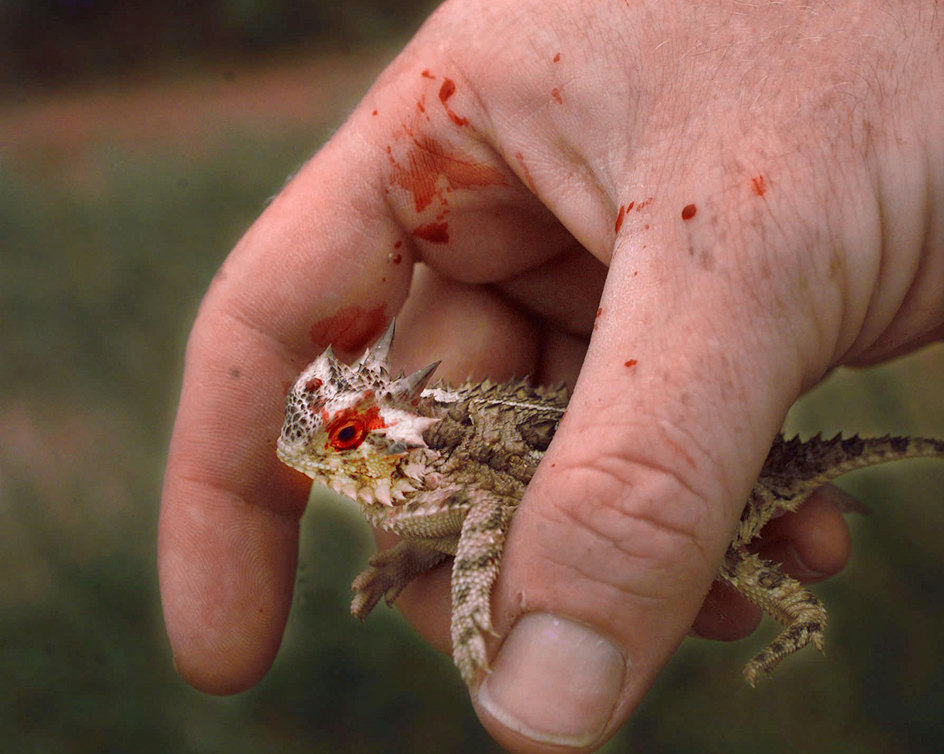
The African chameleons are known for their ability to change color. Many other lizards, however, have this same power. Sometimes, lizards turn a darker color to absorb more heat from the sun’s rays. They also use color changes to communicate with one another. In addition, most lizards rely on their colors to blend into their habitats and hide from enemies. Many desert lizards have light coloring, and those that dwell in the forest are darker. The different species possess various combinations of green, red, gray, brown, white, and black.
Reproduction.
Most lizards lay eggs. Some species deposit their eggs in simple nests. The female skink may coil around the eggs and drive away any intruders. If the eggs become scattered, she brings them back together.
Some lizards do not lay their eggs but give birth to living young after the eggs hatch in the lizard’s body. Others reproduce in somewhat the same way as mammals. These lizards also give birth to living young. Before birth, the developing lizard gets food from the mother’s body. Unlike female mammals, the female lizard does not nurse her young or care for them after birth.
Some species of North American whiptails and European lacertid lizards have only female individuals. The adult females lay unfertilized eggs that hatch only into females.
Food.
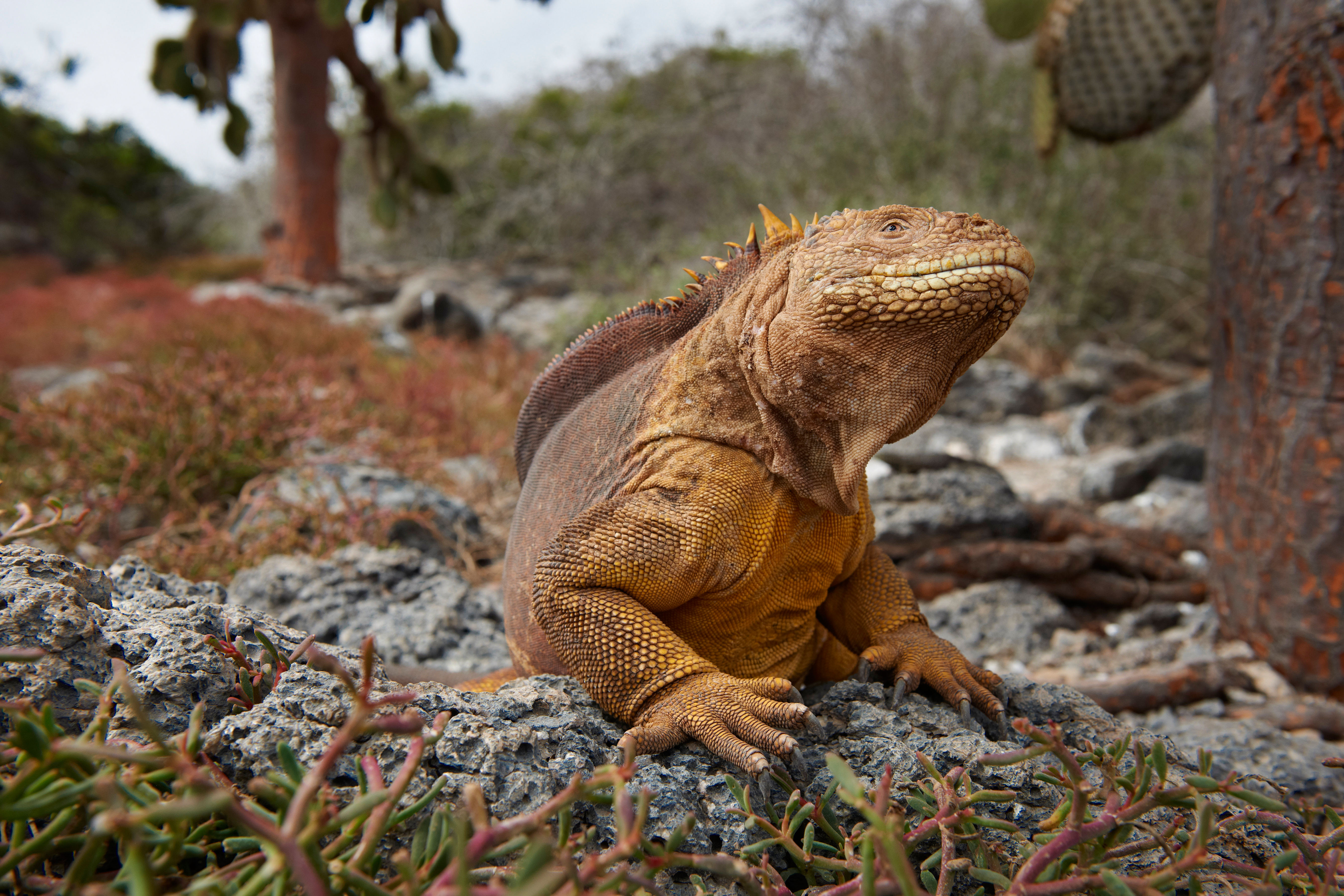
Most lizards eat animals, though some feed on plants. The marine iguanas of the Galapagos Islands feed on algae, which they nibble off of underwater rocks. Hundreds of lizard species eat mostly insects and small animals. Most do not limit their diet to any one thing. A few lizards, such as African chameleons, have a tongue that they can shoot out far beyond their snout. They capture insects on their tongue’s mucus-coated tip. Other lizards seize their victims in their mouths. They swallow their prey as soon as it stops struggling. Komodo dragons can kill and eat deer and other big mammals.
Dangers to lizards.
Human activities threaten the survival of certain species of lizards. People gather lizard eggs and hunt iguanas and other lizards for food in some countries. In many areas, the animal’s habitats have been destroyed. In the past, some lizards were killed for their skins, which were used to make wallets, handbags, and other products. But many countries now forbid killing lizards for this purpose.
